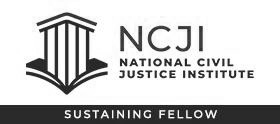Holding a Japanese Manufacturer Accountable in a US Mesothelioma Case
In the fall of 2006, Scott Hendler received an email from a guidance counselor at a middle school in Austin where Scott volunteered as a mentor. The counselor apologized for not being as active in the volunteer program as he hoped to be, but explained that he had recently been diagnosed with mesothelioma. By coincidence, one of the school administrators had served on the jury in a mesothelioma case Scott had tried a few years earlier. She had encouraged the guidance counselor to contact Scott for help.
The counselor knew that mesothelioma was caused by asbestos exposure, but had no idea how he could possibly have been exposed. Scott sat down with him to carefully review his work history, moving backward in time from his present position. At the time, the counselor was 58-years-old.
Scott and the counselor covered every job, year by year, month by month until they reached 1966. During that summer, the counselor had taken a job to help pay for college at a pipe yard in Long Beach, California that distributed cement water pipes imported from Japan.
Japan?! Scott was incredulous. How could it possibly be profitable to ship heavy cement pipes across the Pacific Ocean when the largest U.S. producer of asbestos cement pipe—Johns Manville— made product right there in Long Beach? But Scott had learned through experience never to discount a client’s story, no matter how difficult it was to believe.
When Scott’s team began to look into the facts, they discovered that a Japanese company called Kubota did indeed import cement pipes containing asbestos to California and that the counselor’s former employer had been Kubota’s exclusive distributor in the United States.
After further investigation, Scott learned that in the spring of 1966, a ship carrying Kubota cement pipes across the Pacific ocean from Osaka to Long Beach encountered a storm at sea. The cargo shifted during the storm and the pipes crashed together, causing them to chip and break. That summer the pipe yard needed someone to re-cut the broken ends of the pipes so they could be marketed and sold. They hired an eighteen-year-old college student, who would later become a school teacher and guidance counselor.
Our client’s four-month-long position involved one task for eight hours a day, five days a week: using a carbide grinding wheel spinning at high speed to cut the cement pipe ends in much the same way that a circular saw would. The process shot a constant jet stream of dust into his face. He had only a clear face shield to prevent cement particles from striking his face; there was no protection from the dust cloud that engulfed him. What our client didn’t know until 40 years later was that the cement pipes contained asbestos. That was the source of asbestos exposure that caused his mesothelioma in 2006.
To learn more about Kubota’s manufacturing operation and asbestos legacy, Scott traveled to Japan in the fall of 2007. Kubota manufactured the pipe in a small town outside of Osaka called Amagasaki. The manufacturing plant had been located smack in the middle of a residential neighborhood. Several years prior, Kubota shuttered the plant and converted the site into management offices. Unfortunately, these changes came too late.
By 2007, an environmental disaster was unfolding in Amagasaki: over 100 current and former residents of the neighborhood where the plant was located had developed mesothelioma—an unprecedented number of cases for such a small geographic area. In Japan, the problem was known as “Kubota Shock.”
Scott worked with a Japanese lawyer representing victims in the area to discover what the Japanese medical, scientific, and industrial communities knew about asbestos and when they knew it. They learned that Kubota should have been aware of the risk of asbestos exposure for employees who worked in their plant, people who lived in the neighboring community, and people like Scott’s client who worked with their cement pipes.
While he was in Japan, Scott was invited to speak at an international conference in Yokohama that discussed a worldwide asbestos ban. The topic of Scott’s speech concerned the liability of Japanese asbestos companies in lawsuits filed in the U.S. Scott’s extraordinary commitment to develop the evidence about the Japanese asbestos industry did not go unnoticed. Executives from Kubota’s headquarters in Japan, along with their Japanese corporate insurers, asked to meet with Scott’s team in Hawaii for extended settlement talks to resolve the case. After three days of intense negotiations, all sides agreed upon a way to resolve the case that was unprecedented for the Japanese manufacturer.
Because Scott and his team moved strategically and aggressively, they were able to resolve the case for their client while he was alive to appreciate it. The guidance counselor was able to gain some peace of mind from holding accountable the company that caused his illness and from securing financial stability for his family.














